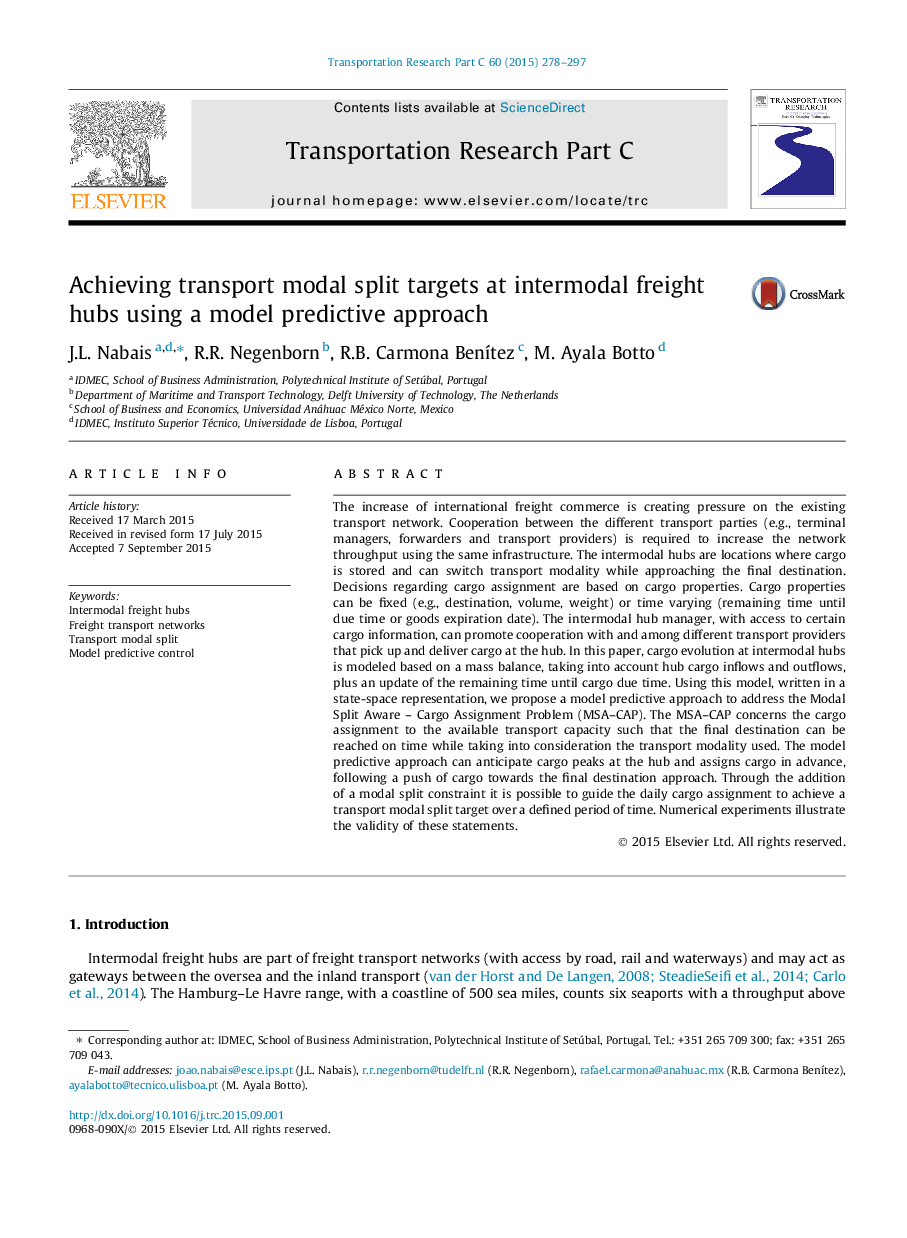| کد مقاله | کد نشریه | سال انتشار | مقاله انگلیسی | نسخه تمام متن |
|---|---|---|---|---|
| 6936618 | 868840 | 2015 | 20 صفحه PDF | دانلود رایگان |
عنوان انگلیسی مقاله ISI
Achieving transport modal split targets at intermodal freight hubs using a model predictive approach
ترجمه فارسی عنوان
دستیابی به اهداف تقسیم مودال حمل و نقل در هاب های حمل و نقل مجتمع با استفاده از رویکرد پیش بینی مدل
دانلود مقاله + سفارش ترجمه
دانلود مقاله ISI انگلیسی
رایگان برای ایرانیان
کلمات کلیدی
هاب های حمل و نقل بین المللی، شبکه های حمل و نقل حمل و نقل، تقسیم مودال حمل و نقل، کنترل پیش بینی مدل،
موضوعات مرتبط
مهندسی و علوم پایه
مهندسی کامپیوتر
نرم افزارهای علوم کامپیوتر
چکیده انگلیسی
The increase of international freight commerce is creating pressure on the existing transport network. Cooperation between the different transport parties (e.g., terminal managers, forwarders and transport providers) is required to increase the network throughput using the same infrastructure. The intermodal hubs are locations where cargo is stored and can switch transport modality while approaching the final destination. Decisions regarding cargo assignment are based on cargo properties. Cargo properties can be fixed (e.g., destination, volume, weight) or time varying (remaining time until due time or goods expiration date). The intermodal hub manager, with access to certain cargo information, can promote cooperation with and among different transport providers that pick up and deliver cargo at the hub. In this paper, cargo evolution at intermodal hubs is modeled based on a mass balance, taking into account hub cargo inflows and outflows, plus an update of the remaining time until cargo due time. Using this model, written in a state-space representation, we propose a model predictive approach to address the Modal Split Aware - Cargo Assignment Problem (MSA-CAP). The MSA-CAP concerns the cargo assignment to the available transport capacity such that the final destination can be reached on time while taking into consideration the transport modality used. The model predictive approach can anticipate cargo peaks at the hub and assigns cargo in advance, following a push of cargo towards the final destination approach. Through the addition of a modal split constraint it is possible to guide the daily cargo assignment to achieve a transport modal split target over a defined period of time. Numerical experiments illustrate the validity of these statements.
ناشر
Database: Elsevier - ScienceDirect (ساینس دایرکت)
Journal: Transportation Research Part C: Emerging Technologies - Volume 60, November 2015, Pages 278-297
Journal: Transportation Research Part C: Emerging Technologies - Volume 60, November 2015, Pages 278-297
نویسندگان
J.L. Nabais, R.R. Negenborn, R.B. Carmona BenÃtez, M. Ayala Botto,
